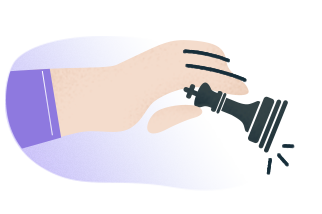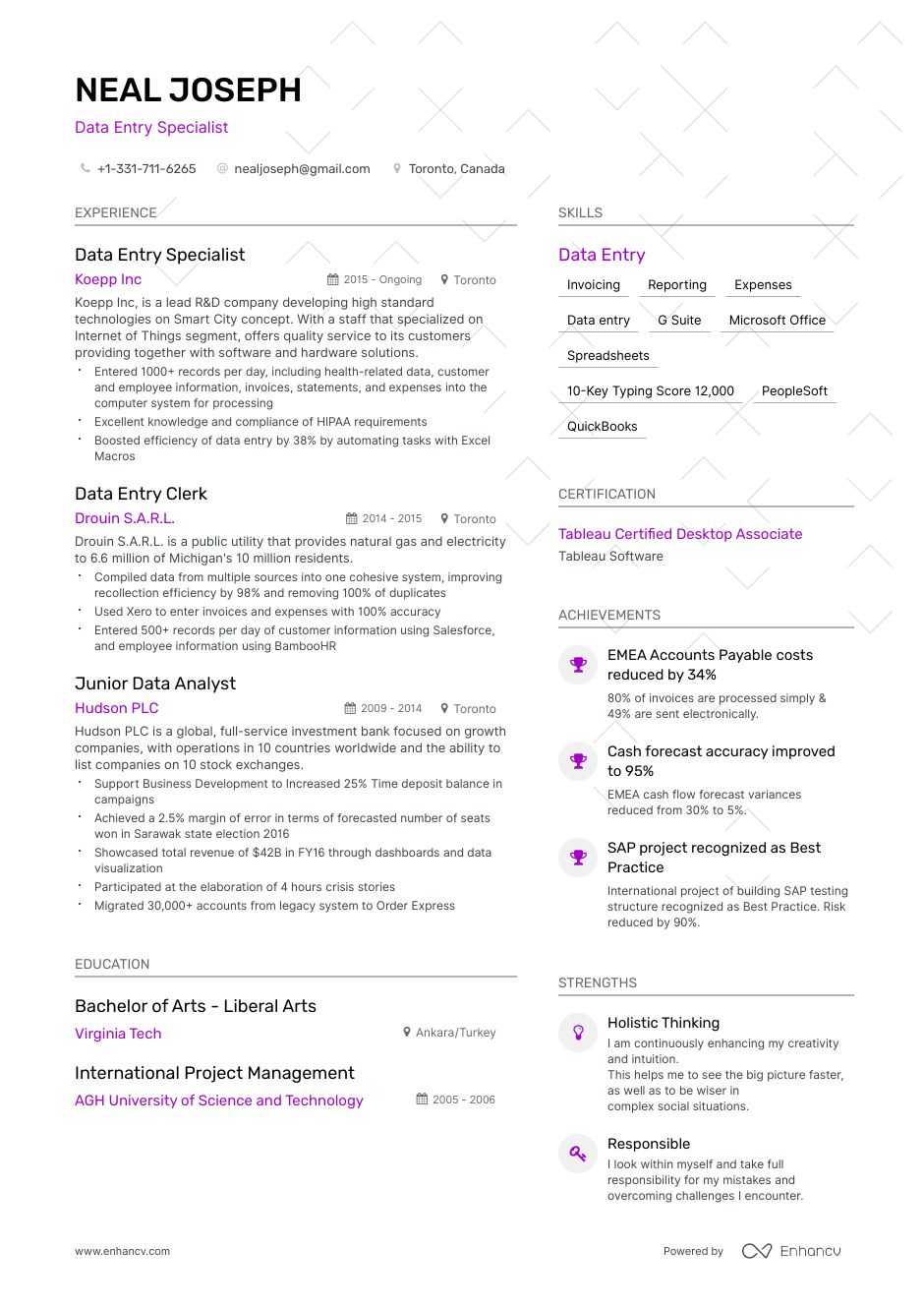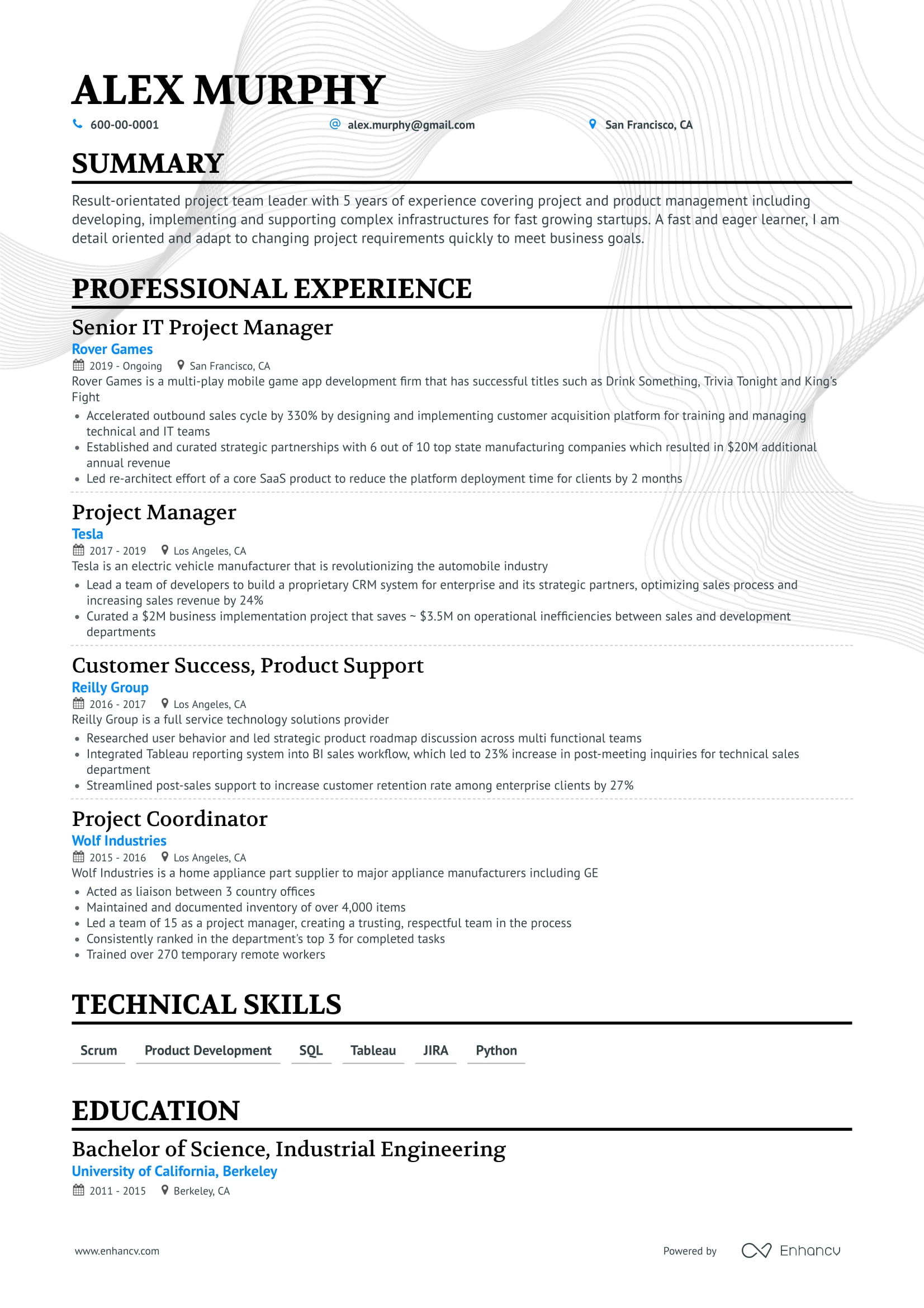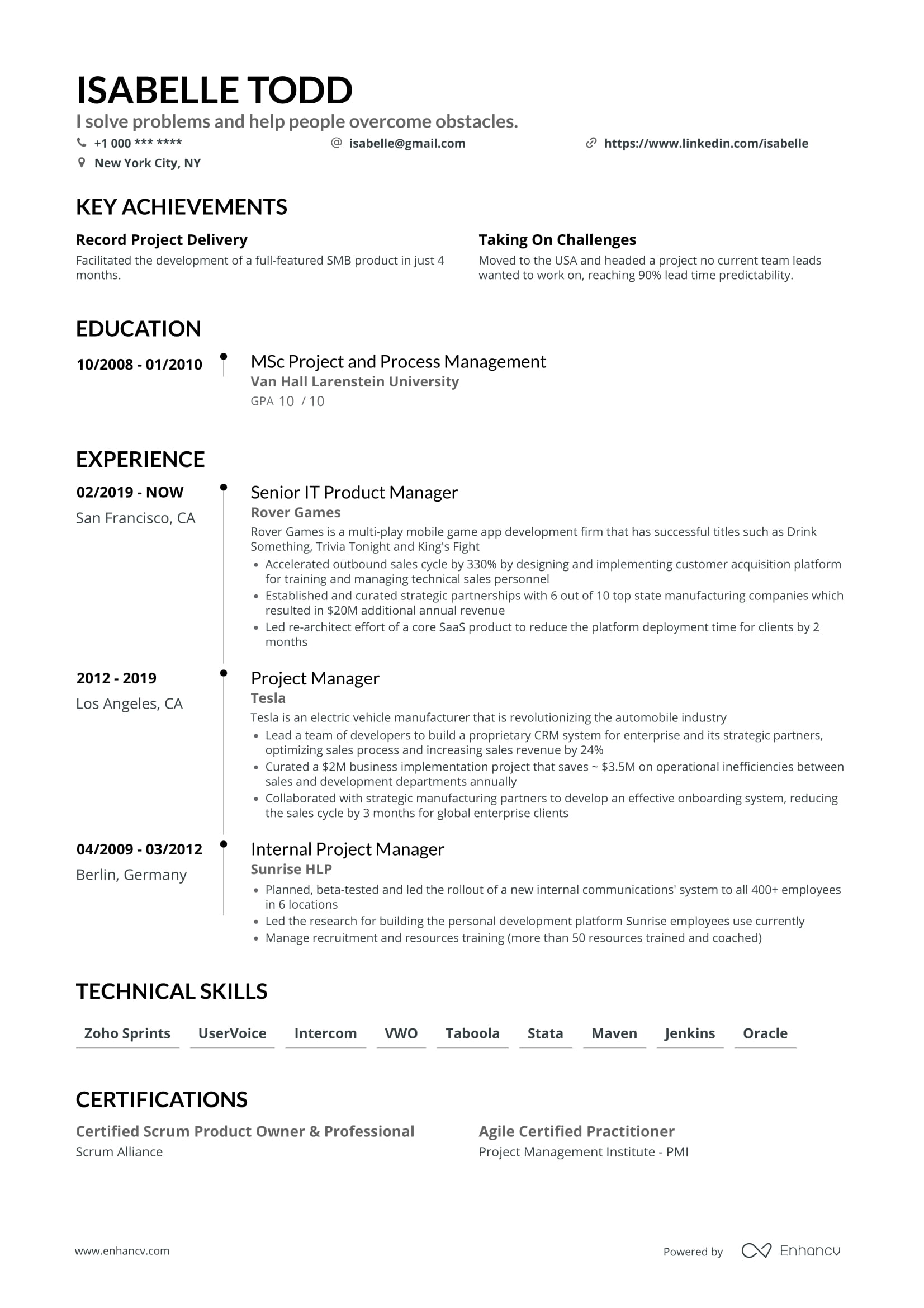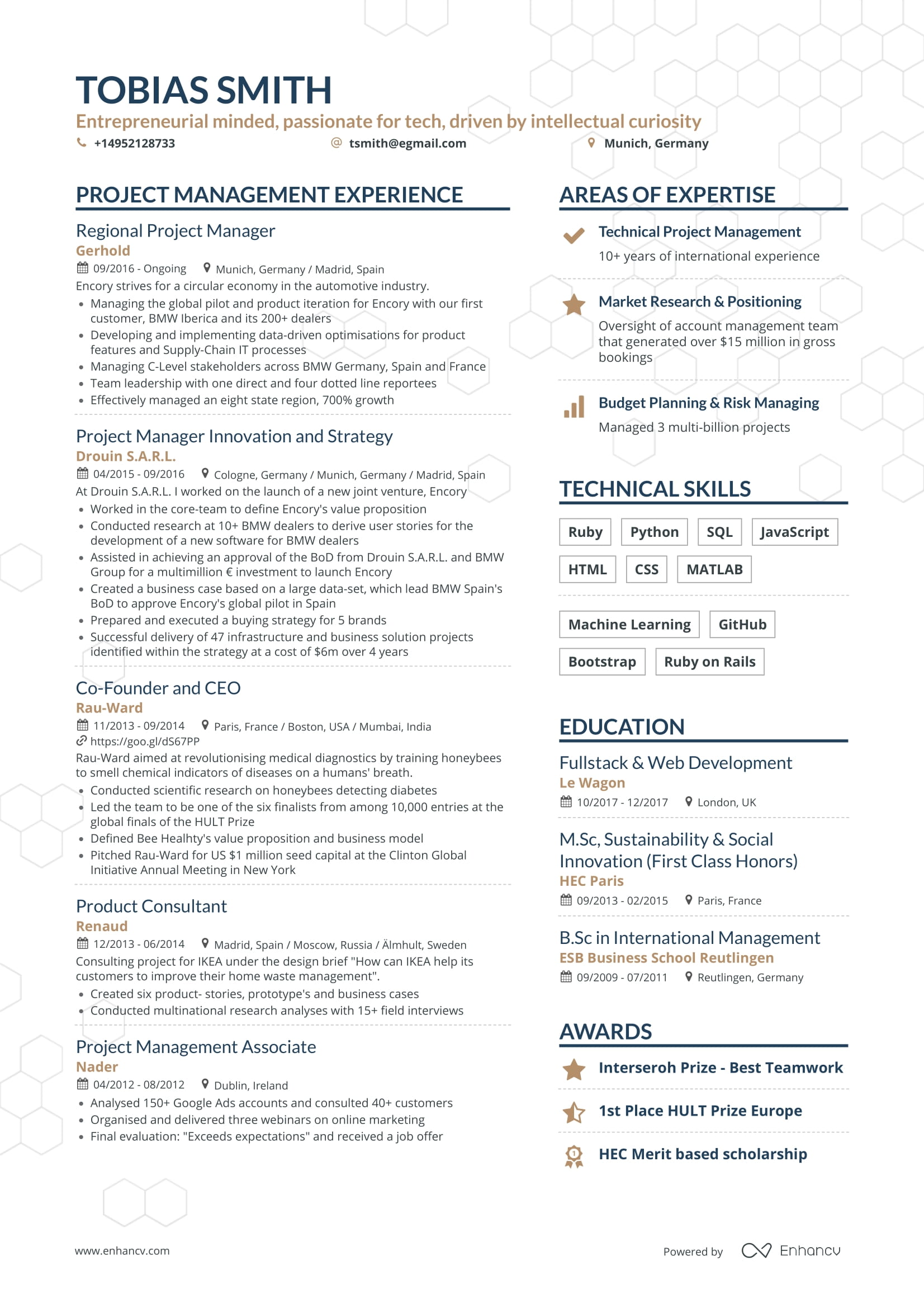Example Data Entry Resume - Browse more resume templates and build a stand-out resume
Want to land a job in data entry?
This guide will help you write a data entry resume that stands out from other candidates.
If you have fast and accurate typing skills, as well as a keen eye for detail, you’re the perfect person for the job.
But your resume has to convince the recruiter that you’re the one for the role in only 7 seconds.
You read that right.
A study from Ladders showed thatrecruiters spend an average of only 7 seconds scanning a resume.
To land an interview, you must write a data entry resume that demonstrates your accurate typing skills, and show that you know your way around common computer programs, like MS Office.
On top of that, recruiters are looking for data entry specialists that have the soft skills to be a great coworker. This means being able to collaborate with others or work on your own effectively.
That may seem like an impossible task for the recruiter to see in only 7 seconds, but it’s do-able with this guide.
We’ll walk you through how to write a data entry resume that lands you a job, fast.
What you will learn from this data entry resume guide:
- How to avoid writing a generic resume by personalizing for the job you want
- Boosting your credibility with real facts and stats
- The best mix of hard and soft skills to include in your data entry resume
- How you should format your resume for the biggest impact
Looking for Related Resumes?
- Business Data Analyst Resume
- Data Analyst Entry Level Resume
- Data Mining Resume
- Data Engineer Resume
- Executive Assistant Resume
- Secretary Resume
Data Entry Resume Example
How to land interviews with your data entry resume
You keep the flow of a company going by ensuring all data is inputted and updated in the system, ready to be used at a moment’s notice.
You keep everything organized and detailed, scanning invoices, documents, expenses, and everything else that needs to be documented.
All while catching errors in the process and keeping things confidential.
Overall, you boost the efficiency of a company, directly and indirectly contributing to their revenue, customer satisfaction, and more.
That’s why companies want to hire candidates who are detail-oriented and motivated to do a great job.
They don’t necessarily need someone with lots of experience or formal training.
Data entry jobs usually require a high school diploma and a fast typing speed.
But they’re also looking at your resume for signs that you’re a hard worker who can handle tight deadlines, keep data up-to-date and accurate, and solve errors.
As a data entry specialist, you’ll spend all of your time working on the computer. Recruiters will be looking out for evidence that you understand computer programs, like MS Office and/or G Suite.
Some job descriptions will list extra programs that you need to know, like Salesforce or Hubspot.
For that reason, don’t send the same resume to every job you apply for.
Duplicate your resume and update some of the keywords to match what that job specifically wants from their ideal candidate.
You can find those keywords directly in the job description under “Responsibilities” or “What you’ll do” (or something similar).
Data entry job descriptions are usually very specific about what you’ll do on the job. If you can relate the summary, experience, and skills sections of your resume to reflect those duties, then you’ll stand out from other candidates.
Now, let’s talk about one of the most important factors of a great data entry resume: formatting.
The right layout will make sure that those 7 seconds the recruiter spends scanning your resume will make the best impact.
If you have data entry experience, use the reverse-chronological format. This layout will highlight your experience the most.
If you’re just starting out in data entry, a functional resume layout is best. This one highlights your skills and data entry abilities, putting less focus on your job history.
Here are some other tips to make our resume easy-to-read:
- Bold any section headings and job titles
- Use bullet points in the descriptions of your work experience, skills, and education
- Type with a legible font, like Times New Roman or Arial, in 12pt size or higher
Let’s jump into how to write a data entry resume, section-by-section.
Recommended resume sections
- Resume header
- Professional summary or objective
- Work experience
- Education and qualifications
- Skills
What hiring managers want to see
- Experience relevant to the job you’re applying for
- The right skills for the job (based on the posting)
- Quantifiable achievements (e.g. Re-entered data in verification format to detect errors which increase sales by 13% within a month)
- Examples of what makes you unique (What a day in your life looks like or your favorite books)
- What you’re most proud of (displayed creatively)
How to write your data entry resume header
Your resume header will house all of your contact information.
It’s also the first place that recruiters will scan.
Let’s help you make a great first impression.
Here are two examples of a data entry resume header to see what you should do, and what you shouldn’t.
This example needs some work.
Let’s look at a better example:
Now, this is better.
Here’s why:
- More descriptive job title, including your specialty (eg. Administrative)
- Has all relevant contact information (email and phone number)
- Includes a LinkedIn profile URL for an added bonus
How to show you’re perfect for the job in your professional summary
How well you do on the job in data entry is based on your attention to detail, efficiency, and ability to meet deadlines.
The professional summary is the section in your resume that highlights your accomplishments and top skills.
You’ll talk about:
- How much experience you have and in what industry (if any specific one)
- Your typing speed
- Overview of your technical knowledge
- Any career highlights backed up with data
This is also a great place to start tailoring your resume for the job you want.
Read the job description to see what they value most or what you’ll be doing in the role, and then focus your summary around those points.
For example, let’s say the job description mentions that they want someone who can review the data to spot and correct errors,
If you have a proven track record of being able to spot an error from a mile away and resolve it, you should mention this in your resume summary.
Let’s look at two examples of resume summaries.
Boring.
This summary won’t excite the recruiter.
This could describe any other data entry specialist.
In order to stand out in your resume, you need to prove why you’re the best one for the job.
Let’s try this again.
Now, this resume summary would have the recruiter jumping out of their seat to call you for an interview.
Here’s why:
- “Administrative data entry specialist with 5+ years of experience in the accounting industry” is an extremely descriptive account of your experience level.
- It uses real data to support points about data submission rate and accuracy level
- Highlights a few key computer programs that the candidate is proficient with
- Personalized to the hypothetical job description, focusing on their priorities (eg. recognizing and solving errors)
- Mentions the typing speed
Now you have your resume header and summary written, so let’s move onto the work experience section.
How to describe your data entry work experience
Data entry jobs get a lot of applicants.
Many of them are remote (work-from-home), which is a huge bonus that a lot of people want.
That being said, the work experience section is the most important part of your resume.
Pay extra attention to making this section great, and you’ll stand out from that sea of applicants.
After we reviewed 114,000 resume examples and job offers, it appeared that an average experience for a data entry job required by employers is 1.4 years.
But experience which appears on data entry resumes is around 2.1 years, making data entry people slightly overqualified.
More experience is always good but if you come across as overqualified to a potential employer, you might lose your chances. The rule of thumb is to tailor your resume to the job description and only leave the relevant experience when writing a data entry resume.
Read the job description closely and write down a list of all of the skills and role responsibilities that they talk about.
Match those skills or duties to things you have done in your former roles.
For example, do they want an applicant who can comply with data integrity and HIPAA requirements?
If you’ve done data entry in the health industry before and know your way around HIPAA, mention this directly in your work experience section.
Or do they need someone to consolidate data from two different systems to avoid duplicates?
If this is something you’ve done before with success, make sure you shout it out.
Your work experience descriptions should answer this one question:
Can you enter data swiftly and accurately? Can you follow regulations and keep data confidential?
Real numbers are your best friend to prove these things. Using quantitative data in your resume boosts your credibility. You can talk about:
- How many records you entered on a daily basis
- Your data accuracy rating
- How much you boosted efficiency with any data automation improvements
Let’s look at some examples of data entry work experience descriptions to see our tips in action.
That description won’t stand out from other applicants.
It says nothing about how well they did their job.
It only lists duties and responsibilities - something anyone can do.
This one is much better than the first example.
Here’s why:
- It’s tailored to the hypothetical job description by focusing on what they value most (experience in the health industry and knowledge of requirements)
- They use real data to support their claims of efficiency
So now you’ve written about your work experience in a clear, cohesive way. But what if you have no data entry experience to talk about?
What if you have no work experience yet in data entry?
Are you just starting out in data entry?
Fortunately, many data entry roles don’t require experience at all.
As long as you have the qualities to do a great job in data entry, they’ll consider you for the role.
These include a high typing speed score, and naturally strong attention to detail.
So, if you check all of those boxes, what are you supposed to write in the work experience section?
You should still mention any past jobs you’ve held, even if your official title wasn’t related to data entry. You likely did something in your role that can be applied to data entry.
For example, if you were a cashier, you scanned items and inputted orders with accuracy.
If you worked in retail, you would have inputted customer orders as well or inputted data from feedback surveys. Maybe you even inputted data from stock inventory.
Think creatively about how you can relate your other job experience to data entry, and then highlight your success and accomplishments in those roles.
You’ll go a long way in gaining confidence from the hiring manager that you’re right for the job.
Does your data entry resume need an education section?
Short answer, yes!
But you don’t need a college degree to land a data entry job.
Most positions require a High School diploma.
List the high school you attended, the location, and the years you attended.
You can also list any notable clubs or positions you held while in high school.
Other than that, you can keep the education section simple and easy.
The best hard and soft skills for your data entry resume
Data entry is a skills-based job.
It’s based on your skills of accuracy, typing, computer proficiency, and problem-solving.
Not only that, recruiters are also looking for candidates that have soft skills too.
They want data entry specialists who will fit in well with their company culture. They want candidates who can follow deadlines, work well under pressure, and collaborate with their colleagues.
The skills section of your resume should balance both hard and soft skills to prove that you’re the well-rounded candidate they need.
It’s also a section that you can tailor for each job role you apply for. Refer back to the job description to see what skills they need from their ideal candidate, write them down and then mirror those same keywords in your own list of skills.
For example, does the job require Excel knowledge?
Or do they need a data entry specialist who can also do database backups?
Maybe they want someone with experience in a specific industry, like medical or technical.
The job description will tell you exactly what skills you need to be considered.
Please note: Only include skills that you can actually do. Stretching the truth on your resume will backfire later.
You can draw inspiration from this big list of data entry skills for your own resume.
Key Takeaways
- Emphasize your typing speed, accuracy, and efficiency as a data entry specialist (using real numbers to back up your claims)
- Tailor your resume for every job you apply for, mirroring the same keywords they use in the job description when they mention the responsibilities of the role
- Keep the format easy-to-read and organized for the highest impact, including using bolded headings and bullet points
